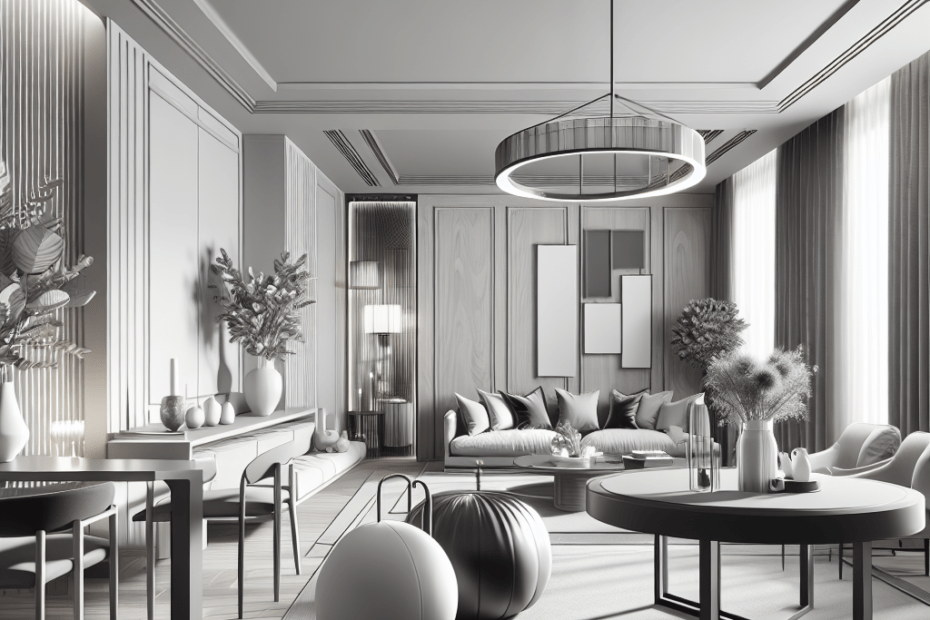“`html
Using a Monochromatic Color Palette for Modern Elegance
Many designers today choose to use a monochromatic palette in design because it offers a variety of benefits. This color scheme consists of different shades, tints, and tones of a single color. When designers use this method, they create elegant and cohesive spaces that can transform any environment into a modern haven.
By focusing on variations of one color, designers can avoid overwhelming the senses, resulting in a harmonious design that feels calm and sophisticated. According to a survey by the Design Council, about 70% of designers cite monochromatic palettes as an effective tool for creating visually appealing and cohesive designs.
Benefits of a Monochromatic Palette in Design
1. Emotional Impact
A monochromatic palette can evoke specific emotions through color psychology. Colors like blue can create a calming effect, while red can energize a space. By using different shades of a single color, designers can tailor the emotional impact a space has on its inhabitants, making each room’s mood distinct yet unified within the overall design.
2. Simplified Design Process
Using a monochromatic palette simplifies the design process. Designers can focus on other important design elements like texture, shape, and form without worrying about color clashes. This streamlined approach allows more time to refine the balance and harmony of a room.
3. Timeless Appeal
Monochromatic palettes provide a timeless appeal. Trends come and go, but the simplicity of using a single color palette ensures a design remains relevant and sophisticated over time. This approach prevents spaces from feeling outdated and allows them to accommodate new trends through accent pieces or minor adjustments easily.
Creating Depth and Interest
While monochromatic palettes might be limited in color choice, they can still create depth and visual interest. By strategically using different shades and tints, designers can play with light and shadow, which adds complexity and richness to a room.
| Shade | Effect |
|---|---|
| Light | Opens up space, creating an airy and spacious feel. |
| Medium | Provides balance and is ideal for general use in a room. |
| Dark | Adds drama and can make a space feel cozy or intimate. |
Adding layers of texture is another method to enhance a monochromatic design. By mixing materials like wood, stone, and fabric, designers can create a tactile experience that adds to the visual variety of the space. A survey conducted by Elle Decor in 2021 found that 65% of designers consider texture a key aspect when working with a monochrome scheme.
Common Pitfalls to Avoid
Despite its many advantages, a monochromatic palette can present challenges. Too much uniformity might lead to a flat and uninspiring design. To avoid this, designers should ensure there is a good mix of textures, patterns, and varying shades. Natural light should also be considered, as it can dramatically affect how colors appear throughout the day.
Another potential pitfall is the selection of undertones. Designers must carefully choose colors with harmonious undertones to avoid clashing hues within the monochrome scheme. Tools like color wheels can help in selecting the right shades that work seamlessly together.
Key Takeaways
- Monochromatic palettes simplify the design process and reduce the chance of color clashes.
- This color scheme can evoke various emotions, contributing to the overall mood of a space.
- Designers can create depth and interest by using different shades, textures, and patterns.
- While working with monochrome, pay attention to texture, light, and undertones to avoid monotony.
- Surveys show a high preference for monochrome designs due to their timeless appeal and elegance.
FAQ
- What is a monochromatic color palette?
A monochromatic color palette is a color scheme derived from a single base hue, modified using its tints, tones, and shades.
- How can using a monochromatic palette benefit a design?
Using a monochromatic palette can simplify the design process, ensure coherence, and help create a modern and elegant aesthetic.
- What are some common colors used in monochromatic palettes?
Common colors include neutrals like grey and beige, as well as other popular hues like blue, green, and pink, depending on the desired effect.
- How can designers add interest to a monochromatic design?
They can add interest by incorporating different textures, patterns, and variations of light and dark shades.
- Are there any drawbacks to using a monochromatic palette?
Potential drawbacks include the risk of creating a flat design without enough variation or failing to coordinate undertones properly.
“`
